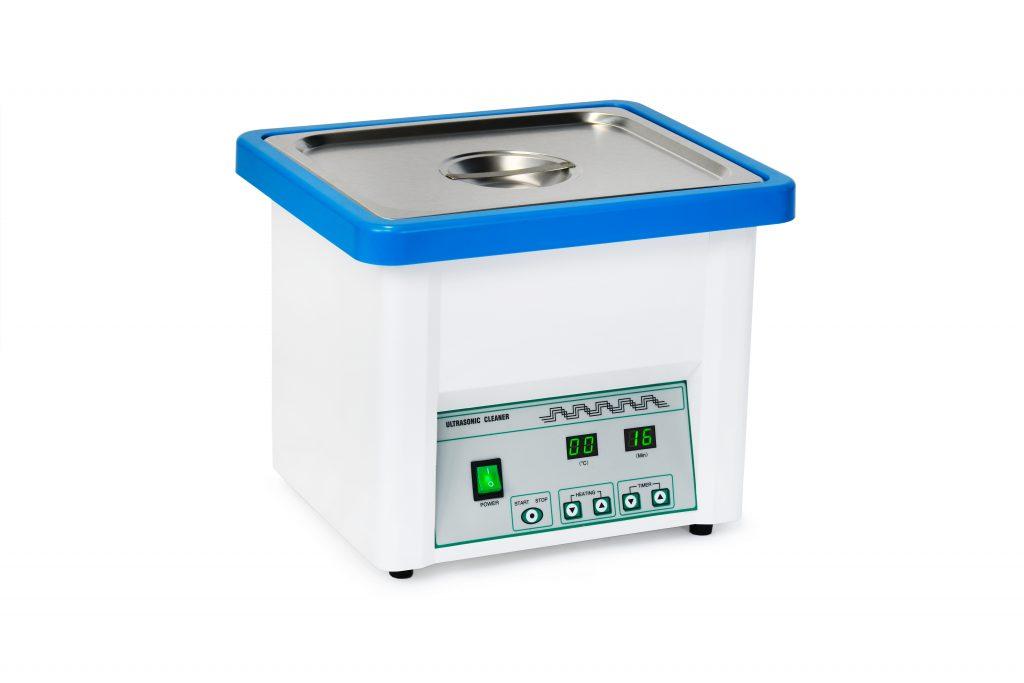
Ultrasonic Cleaners vs Manual Cleaning: What’s the Difference?
Cleaning instruments properly before sterilisation is a crucial step in any infection control process. Whether you work in a dental clinic, beauty salon, tattoo studio or podiatry practice, how you clean your tools directly affects the success of sterilisation.
Two common approaches are manual cleaning and ultrasonic cleaning — but while both remove visible debris, one provides far greater reliability, consistency, and safety.
At Excel Healthcare, we supply ultrasonic cleaners designed to simplify this process and ensure your instruments are properly prepared before being placed in an autoclave.
What Is Manual Cleaning?
Manual cleaning simply means washing instruments by hand using brushes, detergents, or disinfectants before sterilisation. It’s a method that’s still used in smaller studios or when ultrasonic cleaning equipment isn’t available.
Advantages of Manual Cleaning:
-
Low initial cost — no specialist equipment required
-
Simple and accessible for small-scale setups
Disadvantages of Manual Cleaning:
-
Inconsistent cleaning results
-
High risk of cross-contamination
-
Potential for sharps injuries to staff
-
Difficult to remove debris from small or hollow instruments
Even when done carefully, hand-cleaning can leave microscopic residues behind, which interfere with the sterilisation process and increase infection risks.
What Is Ultrasonic Cleaning?
An ultrasonic cleaner uses high-frequency sound waves in a cleaning solution to create microscopic bubbles that gently dislodge dirt and debris — even from areas that brushes can’t reach.
These bubbles implode in a process known as cavitation, which effectively removes biological material from all instrument surfaces without damaging them.
Advantages of Ultrasonic Cleaning:
-
Deep cleaning precision – reaches inside hinges, joints, and fine tips
-
Reduced staff risk – no direct handling of contaminated tools
-
Consistent results – automated cycle times and repeatable cleaning quality
-
Compatible with all autoclaves – perfectly prepares instruments for sterilisation
-
Compliant with HTM 01-05 and CQC hygiene standards
Disadvantages:
-
Higher initial cost (though minimal in long-term operation)
-
Requires electricity and cleaning solution maintenance
Why Ultrasonic Cleaning Is the Safer Choice
For professional settings, ultrasonic cleaning is now widely considered best practice before autoclaving. It offers a validated, mechanical method that supports infection control and complies with NHS HTM 01-05 guidance for decontamination in dental and healthcare environments.
Manual cleaning might remove surface dirt, but ultrasonic cleaning ensures that even the smallest trace of biological residue is removed — something impossible to achieve consistently by hand.
For official guidance, see the NHS HTM 01-05: Decontamination in Primary Care Dental Practices (PDF).
Choosing the Right Ultrasonic Cleaner
When selecting an ultrasonic cleaner, consider:
-
Tank size: Match capacity to the number and size of instruments you clean daily.
-
Frequency: Higher frequencies offer gentler cleaning for delicate tools.
-
Cycle length: Most run between 3–10 minutes for effective cleaning.
-
Build quality: Look for medical-grade stainless steel tanks and solid construction.
Excel Healthcare’s ultrasonic cleaners are designed for clinical, beauty, tattoo and podiatry use. They deliver fast, reliable results and work seamlessly alongside our autoclaves, ensuring complete cleaning and sterilisation.
Best Practice: Ultrasonic Cleaning + Autoclaving
The most effective infection control process combines both methods:
-
Ultrasonic cleaning to remove all traces of contamination
-
Rinsing and drying instruments thoroughly
-
Autoclaving for full sterilisation using steam under pressure
By using both stages, you ensure every instrument meets hygiene standards and remains fully compliant with CQC inspections and local authority licensing.
FAQs About Ultrasonic Cleaning
Can ultrasonic cleaners replace autoclaves?
No. Ultrasonic cleaners remove debris but do not sterilise. Instruments must still be autoclaved afterwards.
How often should I change the ultrasonic cleaning solution?
After every session or when visibly contaminated — clean tanks regularly for best results.
Can I clean delicate instruments ultrasonically?
Yes, the process is gentle and safe for most materials. Always check the manufacturer’s guidelines.
Do I need to dry instruments before autoclaving?
Yes. Moisture can interfere with the sterilisation cycle and compromise the seal of packaging pouches.
Final Thoughts
While manual cleaning can be a useful first step, it can’t match the consistency, safety, or effectiveness of ultrasonic cleaning. Using an ultrasonic cleaner ensures every instrument is cleaned thoroughly before sterilisation, reducing infection risk and maintaining professional hygiene standards.
For best results, pair your ultrasonic cleaner with one of Excel Healthcare’s Class B autoclaves — the perfect combination for safe, compliant instrument preparation.
